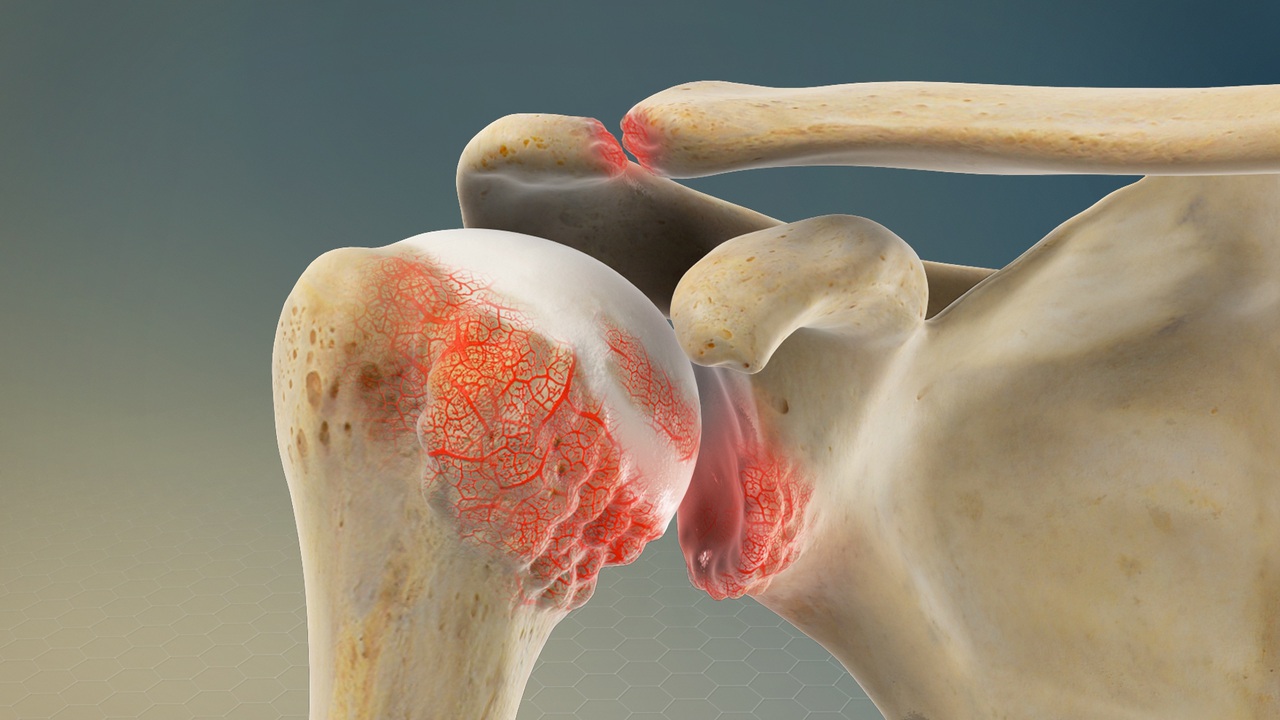Introduction
Arthritis, a collective term for a group of conditions affecting joints and surrounding tissues, has a profound impact on individuals’ lives. Its relentless presence introduces pain, restricts mobility, and diminishes the overall quality of life for those affected. Alarming statistics from the Arthritis Society reveal that 1 in 5 Canadians grapple with the challenges of arthritis on a daily basis, emphasizing the widespread nature of this condition. Unfortunately, the gravity of arthritis is compounded by the fact that there is currently no cure, highlighting the urgent need for effective management strategies.
At its core, arthritis manifests as the swelling and tenderness of one or more joints. The hallmark symptoms include persistent joint pain and stiffness, with these discomforts typically intensifying as individuals age. Among the myriad types of arthritis, osteoarthritis and rheumatoid arthritis stand out as the most prevalent. Osteoarthritis, a degenerative form, instigates the breakdown of cartilage—the tough, slippery tissue that covers the ends of bones where joints form. On the other hand, rheumatoid arthritis involves an autoimmune response, wherein the immune system mistakenly attacks the joint lining, triggering inflammation and damage.
Gout, another distinctive type of arthritis, is characterized by the formation of uric acid crystals in the joints. Elevated levels of uric acid in the blood precipitate this condition, leading to sudden and severe joint pain, often affecting the big toe. Beyond these commonly known types, arthritis can also be a consequence of infections or underlying diseases such as psoriasis or lupus, showcasing the diverse origins of this complex group of conditions.
The pervasiveness of arthritis underscores the importance of raising awareness about its various forms, symptoms, and the significant impact it has on individuals’ daily lives. As researchers continue to explore treatment options and potential breakthroughs, the current focus remains on enhancing the quality of life for those grappling with arthritis. Empowering individuals with knowledge about the condition and promoting early intervention are crucial steps toward managing arthritis effectively and mitigating its profound effects on individuals, families, and communities alike.
What is arthritis ?
Arthritis refers to a group of more than 100 disorders characterized by inflammation of one or more joints. The term “arthritis” is a general term used to describe joint inflammation, and it encompasses various conditions that affect the joints, surrounding tissues, and other connective tissues. The most prevalent types of arthritis include osteoarthritis and rheumatoid arthritis, but there are many others, each with distinct causes, symptoms, and treatment approaches.
- Osteoarthritis (OA): This is the most common form of arthritis and occurs when the protective cartilage that cushions the ends of bones wears down over time. It can affect any joint but often impacts the knees, hips, hands, and spine. Osteoarthritis is typically associated with aging, joint overuse, and joint injury.
- Rheumatoid Arthritis (RA): This autoimmune disorder occurs when the immune system mistakenly attacks the synovium, the lining of the membranes that surround the joints. This results in inflammation that can lead to joint damage and deformities. Rheumatoid arthritis often affects joints on both sides of the body, such as wrists, knees, and fingers.
- Psoriatic Arthritis: Linked to the skin condition psoriasis, psoriatic arthritis affects some people with psoriasis. It can involve joint inflammation, as well as skin and nail changes.
- Ankylosing Spondylitis: This inflammatory arthritis primarily affects the spine, causing pain and stiffness. Over time, it can lead to fusion of the vertebrae, limiting flexibility.
- Gout: Gout is caused by the accumulation of urate crystals in the joints, leading to sudden and severe joint pain, commonly in the big toe. It is associated with elevated levels of uric acid in the blood.
- Juvenile Idiopathic Arthritis (JIA): Formerly known as juvenile rheumatoid arthritis, JIA is a group of arthritis conditions that occur in children under the age of 16. It involves persistent joint pain, swelling, and stiffness.
The Main Types of Arthritis
Osteoarthritis (Degenerative Arthritis):
- Description: Osteoarthritis, degradation of the cartilage at the bone ends, causes pain, swelling and stiffness.
- Risk Factors: Excess weight, family history, age, previous injuries.
Rheumatoid Arthritis (Inflammatory Arthritis):
- Description: Immune attack on joints with uncontrolled inflammation.
- Examples: Rheumatoid arthritis, psoriatic arthritis.
Infectious Arthritis:
- Description: Inflammation triggered by a bacterial, viral or fungal infection.
- Examples: Salmonella, Shigella, Chlamydia, Gonorrhea, Hepatitis C.
Gout (Metabolic Arthritis):
- Description: Uric acid crystals causing episodes of extreme joint pain.
- Causes: High levels of uric acid, accumulation of needle-shaped crystals.
Causes of Arthritis
The causes of arthritis can be diverse and depend on the specific type of arthritis. Here is an overview of the main causes associated with different types of arthritis:
- Osteoarthritis (Degenerative Arthritis):
- Cartilage Wear: Osteoarthritis results from the breakdown of cartilage, the smooth tissue that covers the ends of bones in a joint. Over time, cartilage can wear away due to normal wear and tear, aging, or factors such as previous joint injuries.
- Genetic Factors: Genetic predispositions can increase the risk of developing osteoarthritis, particularly in certain joints like the knees and hips.
- Excess Weight: Being overweight or obese places additional pressure on the joints, especially those that support the body’s weight, which can contribute to the development of osteoarthritis.
- Previous Joint Injuries: Joint injuries, such as a torn anterior cruciate ligament (ACL), can increase the risk of developing osteoarthritis.
- Rheumatoid arthritis :
- Autoimmune Factors: Rheumatoid arthritis is an autoimmune disease in which the immune system mistakenly attacks the synovial membranes that surround the joints, causing inflammation.
- Genetic Factors: Genetic predispositions may increase susceptibility to rheumatoid arthritis.
- Infections: Viral or bacterial infections can trigger the autoimmune response associated with rheumatoid arthritis in some genetically predisposed people.
- Gout (Metabolic Arthritis):
- Excess Uric Acid: Gout is caused by the accumulation of uric acid crystals in the joints. Excess uric acid in the blood can lead to the formation of these crystals.
- Genetic Factors: Some individuals may have a genetic predisposition to produce too much uric acid or not eliminate it effectively.
- Dietary Factors: Certain foods high in purines, such as red meats and seafood, can contribute to high uric acid levels.
- Infectious Arthritis:
- Bacterial or Viral Infections: Certain microorganisms, such as bacteria, viruses or fungi, can infect a joint and trigger an inflammatory reaction.
- Psoriatic arthritis:
- Psoriasis: Psoriatic arthritis is often associated with psoriasis, a chronic skin disease. The exact mechanisms that link these two conditions are not fully understood.
- Juvenile Idiopathic Arthritis:
- Unknown Causes: Juvenile idiopathic arthritis is a form of arthritis that develops in children and the precise cause remains unknown. Genetic and environmental factors may play a role.
Symptoms of Arthritis
Common symptoms of arthritis can vary depending on the specific type of arthritis and the severity of the condition. However, here is a list of general symptoms that are often associated with various types of arthritis:
- Joint Pain: Pain is one of the most common symptoms of arthritis. It may be felt in one or more joints and may vary in intensity.
- Joint Stiffness: Affected joints may become stiff, particularly after a period of inactivity such as sleeping or prolonged sitting.
- Swelling: Joint swelling is common in people with arthritis. This swelling may be due to fluid buildup in the joints.
- Decreased Range of Motion: Joint movement may be limited due to pain, stiffness, or swelling, leading to a decreased range of motion.
- Hanging or Locking Joints with Movement: Certain types of arthritis can cause joints to catch or lock during movement, which can be uncomfortable.
- Redness of the Skin Around the Joint: Inflammation associated with arthritis can lead to redness of the skin around the affected joints.
Good Habits to Follow for Those Suffering from Arthritis
For people suffering from arthritis, adopting healthy lifestyle habits can help alleviate symptoms, improve quality of life and promote overall well-being. Here are some recommendations for good habits to follow for those suffering from arthritis:
- Maintain Appropriate Physical Activity:
- Low-Impact Exercises: Opt for low-impact exercises, such as swimming, walking, cycling or water gymnastics. These activities preserve the joints while strengthening the muscles.
- Stretching: Incorporate stretching exercises into your routine to improve joint flexibility and reduce stiffness.
- Medical Consultation: Before starting an exercise program, consult your healthcare professional to ensure that the activities chosen are suitable for your condition.
- Maintain a Healthy Weight:
- Weight Management: Maintain a healthy weight, as excess weight can put extra strain on joints, worsening arthritis symptoms.
- Nutritional Consultation: Consult a nutritionist to develop a dietary plan adapted to your needs and promoting joint health.
- Adopt a Balanced Diet:
- Anti-Inflammatory Foods: Include foods rich in antioxidants and with anti-inflammatory properties, such as fruits, vegetables, oily fish, nuts and seeds.
- Limit Pro-Inflammatory Foods: Reduce the consumption of processed foods, high in added sugars and saturated fats, which can contribute to inflammation.
- Improve Sleep Quality:
- Sleep Routine: Establish a regular sleep routine and ensure you get quality sleep.
- Sleep Ergonomics: Invest in a suitable mattress and pillows to comfortably support the joints during sleep.
- To manage stress :
- Stress Management Techniques: Practice relaxation techniques, such as meditation, deep breathing, or yoga, to reduce stress, which can worsen arthritis symptoms.
- Work-Life Balance: Maintain a healthy work-life balance to reduce daily stress.
- Regularly consult a Health Professional:
- Use Mobility Aids if Necessary:
- Assistive Devices: Consider the use of canes, crutches, or other assistive devices to relieve pressure on joints when walking.
- Home Improvements: Make adjustments to your home to make it easier to get around and reduce stress on joints.


























